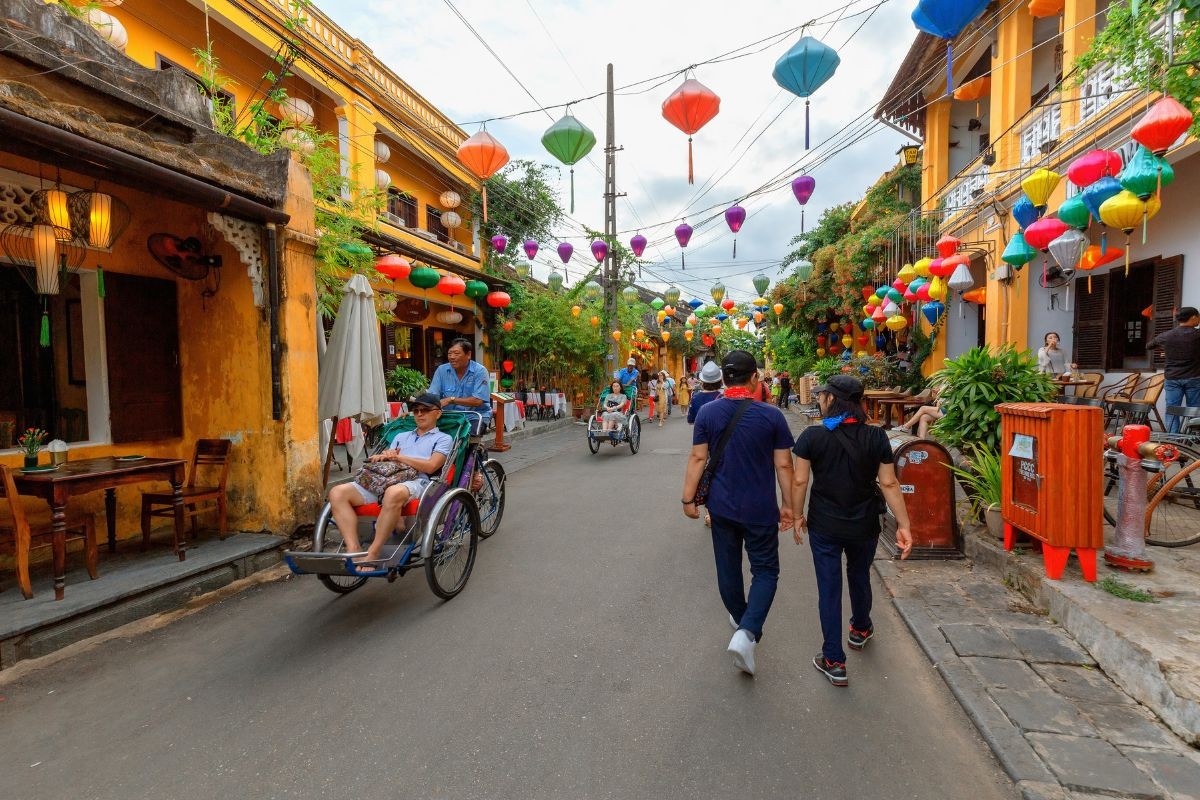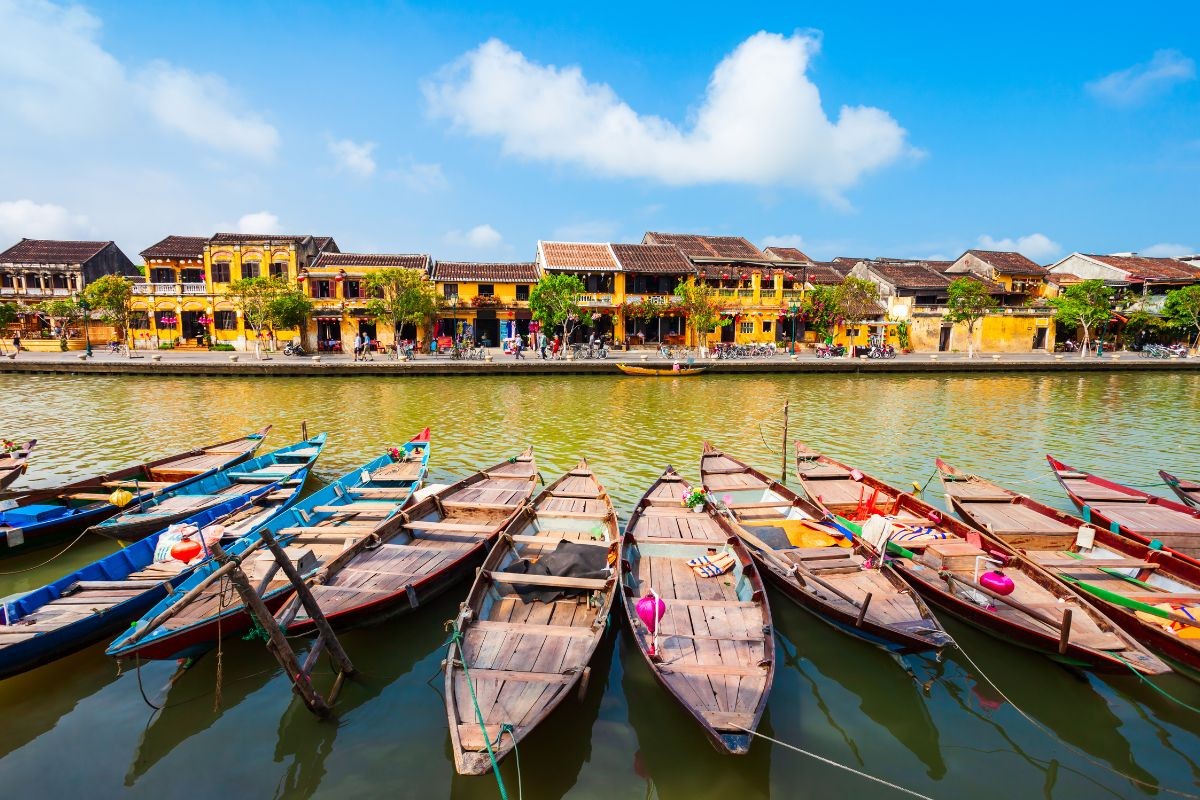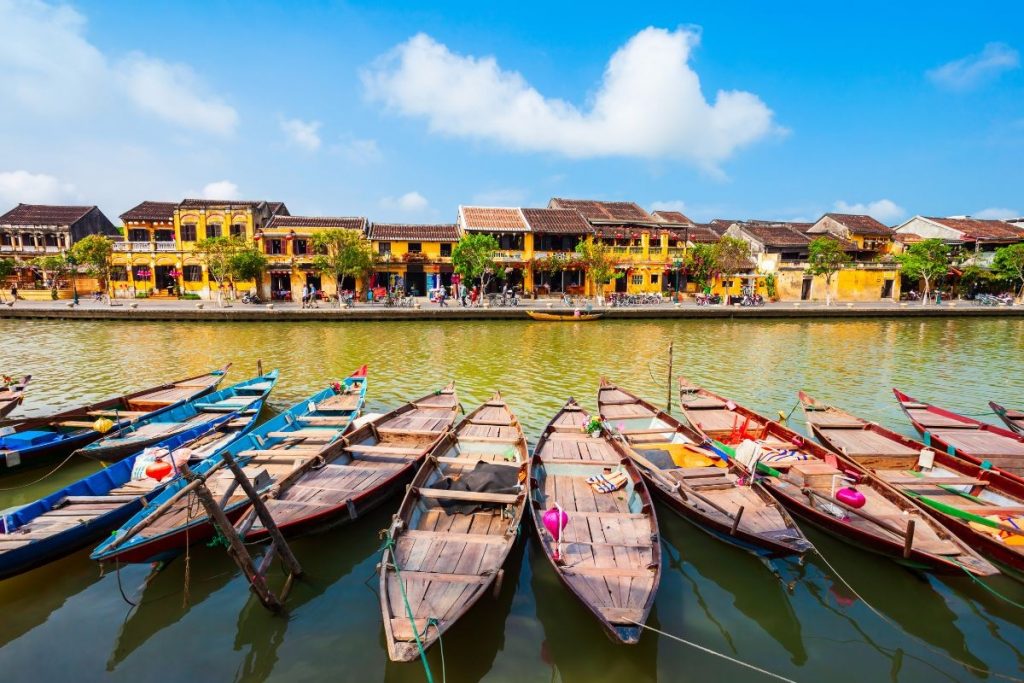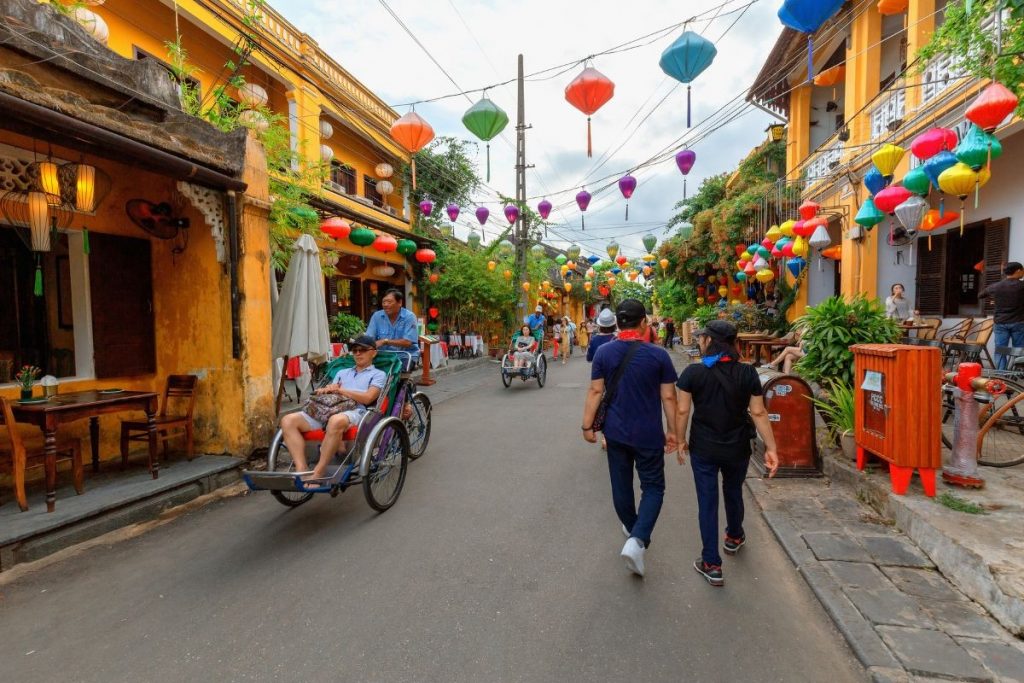Premier Village Danang Resort Managed by Accor - Luxury family-friendly resort
- Best Time to Visit Hoi An: Monthly Weather Guide 2025Premier Village Danang Resort Managed by Accor
- English
- 简体中文
- 한국어
- Tiếng Việt
- See this hotel on Accorhotels.com or brand website in other languages :
Best Time to Visit Hoi An: Monthly Weather Guide 2025
Hoi An is an unmissable destination when traveling to Central Vietnam, renowned for its ancient charm and unique cultural experiences. However, choosing the right time to visit Hoi An is crucial to the overall quality of your trip. The city experiences a tropical monsoon climate with two main seasons: the rainy season and the dry season. Understanding the seasonal weather characteristics will help you better plan your itinerary and organize an enjoyable travel experience. So, when is the best season to visit Hoi An? Let’s explore in this article to choose the ideal time for your journey.
What Is the Most Beautiful Season to Visit Hoi An?
If you’re wondering what is the best time to explore Hoi An, the answer is the dry season, which spans from February to July. During this time, Hoi An showcases its most vibrant and picturesque charm, with cool air, gentle sunshine, and minimal rainfall. It’s the perfect season for you to experience the Hoi An Ancient Town, stroll along the historic streets, visit cultural and historical landmarks, and especially indulge in local culinary specialties at street-side eateries.
Meanwhile, the rainy season lasts from August to February of the following year. Although it brings a peaceful, dreamy, and romantic ambiance to the old town, it’s less suitable for outdoor activities such as swimming at An Bang Beach or joining long day tours. However, if you’re looking to enjoy a tranquil and serene side of Hoi An, the rainy season offers a uniquely relaxing experience, away from the bustling tourist crowds.
So if you’re aiming for a complete travel experience filled with exciting activities and a deep dive into things to do in Hoi An, the dry season will undoubtedly be the ideal choice.
Dry Season (January – July)
The dry season in Hoi An lasts from January to July, offering mild and pleasant weather that is ideal for extended sightseeing. You can comfortably stroll through the ancient streets, explore the iconic red-tiled houses, visit historic temples, or simply relax at a cozy street-side café.
In addition, this is the perfect time to enjoy outdoor activities such as cycling through the peaceful countryside, visiting traditional craft villages like Thanh Ha Pottery Village, or joining early-morning walking tours around the ancient town.
The dry season is also the ideal time to immerse yourself in the cool, refreshing waters of popular beaches like Cua Dai and An Bang. You can also engage in water sports such as snorkeling around the coral reefs of Cham Islands. With its cool climate and minimal rainfall, the dry season allows you to make the most of your time in Hoi An – exploring and participating in outdoor experiences without disruptions from bad weather.
Rainy Season (August – February of the Following Year)
The rainy season in Hoi An lasts from August to February of the following year, characterized by frequent downpours and a humid atmosphere. This is considered the low season for tourism in Hoi An, allowing you to enjoy a tranquil and peaceful setting without the crowds typical of the dry season. The Ancient Town takes on a mystical, dreamlike beauty during the rainy months, often shrouded in mist and softened by gentle rain.
However, the rainy season does come with some drawbacks. Streets can flood, making transportation and sightseeing more difficult. Outdoor activities such as beach outings, visits to traditional craft villages, or exploring natural attractions may be interrupted by heavy rains.
That said, the rainy season also brings attractive discounts and promotions from local accommodations, helping you reduce travel expenses. If you’re not deterred by the rain and appreciate a quiet, romantic atmosphere, the rainy season in Hoi An can offer a uniquely memorable travel experience.
Hoi An Weather by Month
To help you plan your trip more easily, here is a summary of Hoi An’s weather by month:
| Month | Avg Low Temp (°C) | Avg High Temp (°C) | Avg Rainfall (mm) | Weather Highlights |
| January | 20 | 25 | 36.5 | Coldest month of the year, clearer skies, less humidity. Best time for sightseeing. |
| February | 20 | 26 | 11.5 | Driest month of the year, clear skies, and cool weather. Ideal for exploring Hoi An. |
| March | 22 | 28 | 12.7 | Cool season ends, temperatures begin to rise. Still good for travel, but slightly warmer. |
| April | 24 | 31 | 26.1 | Sunniest month of the year, light breezes. Fewer clouds—great for outdoor activities. |
| May | 25 | 33 | 57.5 | Rising temperatures and southern winds signal the upcoming hot season. |
| June | 26 | 34 | 62.2 | Hottest month of the year, high temperatures, and more cloud cover. Can feel humid. |
| July | 26 | 34 | 57.7 | Still hot, but light winds make the weather more comfortable. |
| August | 26 | 33 | 116.4 | Start of the wet season, frequent rains, and high water temperatures. |
| September | 25 | 31 | 283 | High rainfall and continued humidity. Weather remains damp and warm. |
| October | 24 | 29 | 445.5 | Peak of the rainy season, heavy rainfall and strong winds. |
| November | 22 | 27 | 300.5 | Wet season tapers off, cooler temperatures. A great time to visit. |
| December | 20 | 25 | 140 | Cool season begins, stable temperatures and pleasant weather. |
Note: This information is for reference only, as weather conditions may vary from year to year. You should check the forecast in advance before making travel plans to be fully prepared for your trip.
Stay at Premier Village Danang Resort – A 5-Star Retreat Managed by the Accor Group
Your trip to Da Nang – Hoi An will be more perfect than ever when paired with a stay at Premier Village Da Nang Resort, a luxurious 5-star resort managed by the Accor Group.
Nestled along the stunning My Khe Beach, just 30 minutes from Hoi An, Premier Village offers an elegant escape with private villas, outdoor pools, and premium services.
From Premier Village, you can easily visit famous attractions in both Da Nang and Hoi An without worrying about long commutes. The resort also features top-tier relaxation amenities such as a full-service luxury spa, exciting water sports, and international dining experiences – ensuring you enjoy a truly fulfilling and rejuvenating vacation.
Address: 99 Vo Nguyen Giap Street - Ngu Hanh Son Ward - 550000 - Danang - Vietnam Phone: +84 (0) 2363 919 999 Fax: +84 (0) 2363 919 998 Email: H9530@accor.com






Follow us
Stay in touch and connected to all the news and happenings.